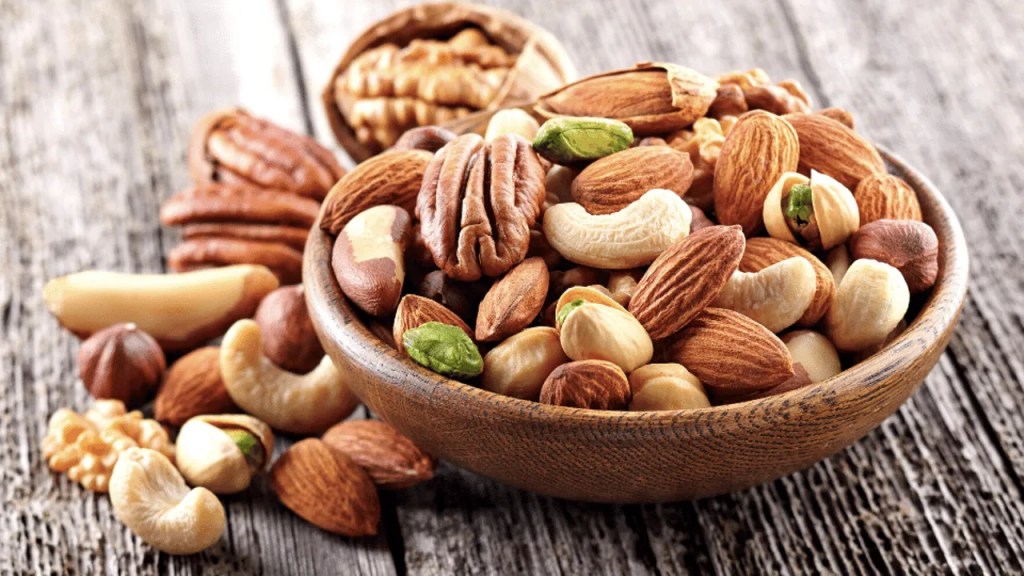If you’ve hit the big 5-0 and noticed your metabolism has decided to take an extended vacation, you’re not alone. While your younger self could demolish a pizza at midnight and wake up unchanged, these days it feels like even looking at carbs adds an extra inch to your waistline. But before you resign yourself to a lifetime of lettuce leaves and regret, science has some incredibly good news.
The truth is, your body’s fat-burning potential doesn’t have an expiration date. It just needs the right fuel to reignite those metabolic fires. And that fuel might already be sitting in your refrigerator, waiting to transform your 50-plus physiology into a lean, mean, calorie-burning machine.
Why Your Metabolism Went MIA (And Why It’s Not Your Fault)
Let’s address the elephant in the room: aging happens to everyone, and it brings some unwelcome metabolic changes along for the ride. Tara Collingwood, a Board-Certified Sports Dietitian and co-author of the Flat Belly Cookbook for Dummies, puts it simply: “Muscle mass naturally declines with age, and that can lower the number of calories you burn at rest.”
This process, called sarcopenia, typically begins in your 30s and accelerates after 50. Every decade, you can lose 3-8% of your muscle mass, and since muscle tissue burns more calories than fat tissue even when you’re binge-watching Netflix, this loss directly impacts your metabolic rate.
But here’s where the story gets interesting. While you can’t stop time, you can absolutely outsmart it. The secret weapon? Strategic eating that works with your body’s natural processes rather than against them.
“You don’t need extreme diets or marathon workouts to support your metabolism after 50,” Collingwood explains. “Focus on these whole, nutrient-rich foods, pair them with regular strength training, and your body will have the tools it needs to burn fat more efficiently at any age.”
The Science of Smart Eating: Your Metabolism’s Best Friend
Before diving into the specific foods that’ll rev your metabolic engine, let’s talk about why certain foods are metabolic superstars. The key lies in something called the thermic effect of food (TEF), which sounds fancy but is actually quite simple.
Every time you eat, your body has to work to digest, absorb, and process those nutrients. This work burns calories, and some foods require way more energy to process than others. Protein is the MVP here, requiring 15-30% more energy to digest compared to just 5-10% for carbohydrates and a measly 0-3% for fats.
This means that simply by choosing protein-rich foods, you’re essentially getting a metabolic bonus with every meal. It’s like earning interest on your nutritional investments.
The Magnificent Seven: Foods That Keep Your Fire Burning
1. Salmon: The Omega-3 Powerhouse

If there’s one food that deserves a permanent spot on your grocery list, it’s salmon. This pink-fleshed fish is like a multivitamin you can actually enjoy eating. Rich in both high-quality protein and omega-3 fatty acids, salmon delivers a one-two punch that your over-50 metabolism absolutely loves.
The protein helps preserve and build lean muscle mass (remember, more muscle equals more calories burned), while the omega-3s fight inflammation that can interfere with your body’s fat-burning processes. Think of salmon as your metabolic bodyguard, protecting your muscle tissue while actively supporting fat loss.
The American Heart Association recommends eating fatty fish at least twice per week, so you’re not just supporting your metabolism but also protecting your cardiovascular health. It’s efficiency at its finest.
2. Greek Yogurt: The Probiotic Protein Champion

Greek yogurt isn’t just regular yogurt’s sophisticated cousin; it’s a metabolic multitasker that works overtime for your waistline. With nearly double the protein content of regular yogurt, Greek yogurt keeps your muscle-building processes humming while delivering probiotics that support gut health.
Why does gut health matter for metabolism? Recent research suggests that the bacteria in your digestive system play a crucial role in how efficiently you burn calories and store fat. A healthy gut microbiome is linked to better weight control, making Greek yogurt a smart choice for anyone looking to optimize their metabolic function.
Pro tip: Choose plain Greek yogurt and add your own berries or nuts. The flavored varieties often contain enough sugar to counteract the metabolic benefits you’re after.
3. Eggs: The Complete Protein Package

Eggs have survived more nutritional controversies than any other food, and they’ve emerged victorious for good reason. These nutritional powerhouses contain all nine essential amino acids your body needs to maintain and build muscle tissue.
But eggs bring more to the table than just protein. They’re loaded with vitamin B12, which plays a crucial role in converting food into energy. Without adequate B12, your metabolic processes can slow to a crawl, making weight management even more challenging as you age.
The versatility factor is huge too. Whether scrambled, hard-boiled, or mixed into a veggie frittata, eggs can fit into any meal and any lifestyle. Keep a batch of hard-boiled eggs in your fridge for quick protein fixes throughout the week.
4. Leafy Greens: The Low-Calorie Nutrient Bombs

Spinach, kale, arugula, and their leafy green siblings might seem too simple to be metabolic game-changers, but don’t underestimate their power. These vegetables are what nutritionists call “negative calorie foods” because they require more energy to digest than they provide in calories.
Leafy greens are also rich in iron, magnesium, and other minerals that support energy production at the cellular level. Without adequate iron, your body can’t efficiently transport oxygen to your muscles, leading to fatigue and reduced calorie burning.
The high water content in leafy greens also helps with satiety, meaning you’ll feel full and satisfied without consuming many calories. It’s like getting maximum nutritional bang for minimal caloric buck.
5. Nuts and Seeds: The Healthy Fat Heroes

For decades, nuts and seeds were dietary villains because of their fat content. Now we know better. The healthy fats, protein, and fiber in nuts and seeds work together to keep blood sugar levels stable, preventing the insulin spikes that can trigger fat storage.
Almonds, walnuts, chia seeds, and flaxseeds are particularly beneficial for over-50 metabolisms. They provide sustained energy without the blood sugar rollercoaster that comes from refined carbohydrates, helping your body maintain its fat-burning state throughout the day.
The key with nuts and seeds is portion control. A small handful (about one ounce) provides all the benefits without excessive calories. Think of them as metabolic medicine rather than mindless snacks.
6. Avocados: The Creamy Satisfaction Solution

Avocados have reached superfood status, and for good reason. These green gems are packed with monounsaturated fats that support heart health while providing exceptional satiety. When you feel satisfied after eating, you’re less likely to reach for metabolically damaging processed snacks.
Research has shown that people who regularly consume avocados tend to have lower body weight, lower body mass index, and smaller waist circumference. The fiber content also supports digestive health, which circles back to that important gut-metabolism connection.
Plus, avocados make everything taste better. Add them to salads, spread them on toast, or blend them into smoothies for a creamy texture that feels indulgent while supporting your metabolic goals.
7. Beans and Lentils: The Fiber and Protein Dream Team

Legumes might not be glamorous, but they’re metabolic workhorses. Beans, lentils, and chickpeas provide a unique combination of plant-based protein and fiber that keeps blood sugar steady while supporting muscle maintenance.
The fiber in legumes feeds beneficial gut bacteria, supporting that crucial gut-metabolism connection. Meanwhile, the protein provides the building blocks your muscles need to stay strong and metabolically active.
Lentils deserve special mention here. One cup provides about 35% of your daily iron needs, which is especially important for women over 50 who need more than twice the amount of iron as men. Iron deficiency can significantly slow your metabolism, making these little nutritional powerhouses particularly valuable.
Beyond the Magnificent Seven: Additional Metabolic Boosters
While the seven foods above form the core of your fat-burning arsenal, several other foods deserve honorable mention for their metabolic benefits.
Coffee and Green Tea contain caffeine, which can temporarily increase your metabolic rate and promote fat burning. The key word here is “temporarily,” so don’t expect coffee alone to transform your physiology. However, when combined with the right foods, these beverages can provide a modest metabolic boost.
Chili Peppers contain capsaicin, a compound that can increase your body’s internal temperature and temporarily boost calorie burning. While the effect is small, every little bit helps when you’re trying to optimize your metabolism.
Lean Meats like chicken and turkey require significant energy to digest, thanks to their high protein content. They also provide the amino acids necessary for maintaining muscle mass as you age.
The Real-World Application: Making It Work for You
Understanding which foods support your metabolism is only half the battle. The other half is incorporating them into your daily routine in a sustainable way. Here’s how to make these metabolic superstars work in real life:
Start Your Day Right: Begin each morning with protein. Whether it’s eggs, Greek yogurt, or a protein-rich smoothie, prioritizing protein early sets the tone for stable blood sugar and sustained energy throughout the day.
Think Combination: Rather than focusing on individual foods, think about combinations that maximize metabolic benefits. Try salmon with a side of sautéed spinach, or top your salad with avocado, nuts, and hard-boiled eggs.
Prep for Success: Spend time on weekends preparing metabolic-boosting foods. Cook a batch of lentils, hard-boil eggs, and wash leafy greens so they’re ready when you need them during busy weekdays.
Listen to Your Body: While these foods support metabolism, everyone’s body responds differently. Pay attention to how different foods make you feel and adjust accordingly.
The Strength Training Connection
While this article focuses on food, it’s important to mention that nutrition works best when paired with resistance training. Building and maintaining muscle mass through strength training amplifies the metabolic benefits of these foods exponentially.
You don’t need to become a bodybuilder or spend hours in the gym. Even two to three strength training sessions per week can help preserve and build the muscle tissue that keeps your metabolism humming efficiently.
Beyond Weight Loss: The Bigger Picture
While much of the focus on metabolism centers around weight management, the benefits of eating metabolically supportive foods extend far beyond the number on the scale. These foods support:
- Cardiovascular Health: The omega-3s in salmon, fiber in beans, and healthy fats in avocados all support heart health.
- Brain Function: Many of these foods provide nutrients that support cognitive function, which becomes increasingly important as we age.
- Bone Health: The protein and various minerals in these foods support bone density, helping prevent osteoporosis.
- Energy Levels: Stable blood sugar from fiber and protein means more consistent energy throughout the day.
- Overall Longevity: These whole, nutrient-dense foods support healthy aging in numerous ways.
The Bottom Line: Your Metabolism Isn’t Broken
If you’ve been frustrated by metabolic changes after 50, remember that your body isn’t broken; it just needs different support than it did in your younger years. By focusing on nutrient-dense, metabolically supportive foods, you can work with your body’s natural processes rather than against them.
The seven foods outlined here aren’t magic bullets, but they are powerful tools in your metabolic toolkit. When combined with regular strength training, adequate sleep, and stress management, they can help restore that fat-burning efficiency you thought was gone forever.
Your fifties and beyond can be some of your healthiest, most energetic years yet. It just requires a slightly different approach to nutrition, one that honors your body’s changing needs while supporting its incredible potential for health and vitality.
The best part? You don’t need to completely overhaul your diet overnight. Start by incorporating one or two of these foods into your routine this week, then gradually add more as they become habits. Your metabolism will thank you, your energy levels will improve, and you might just discover that age really is just a number when you know how to fuel your body right.















